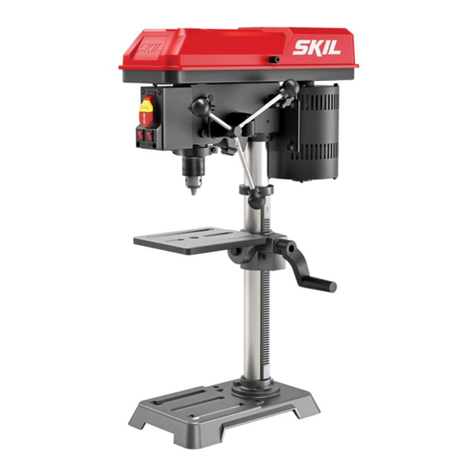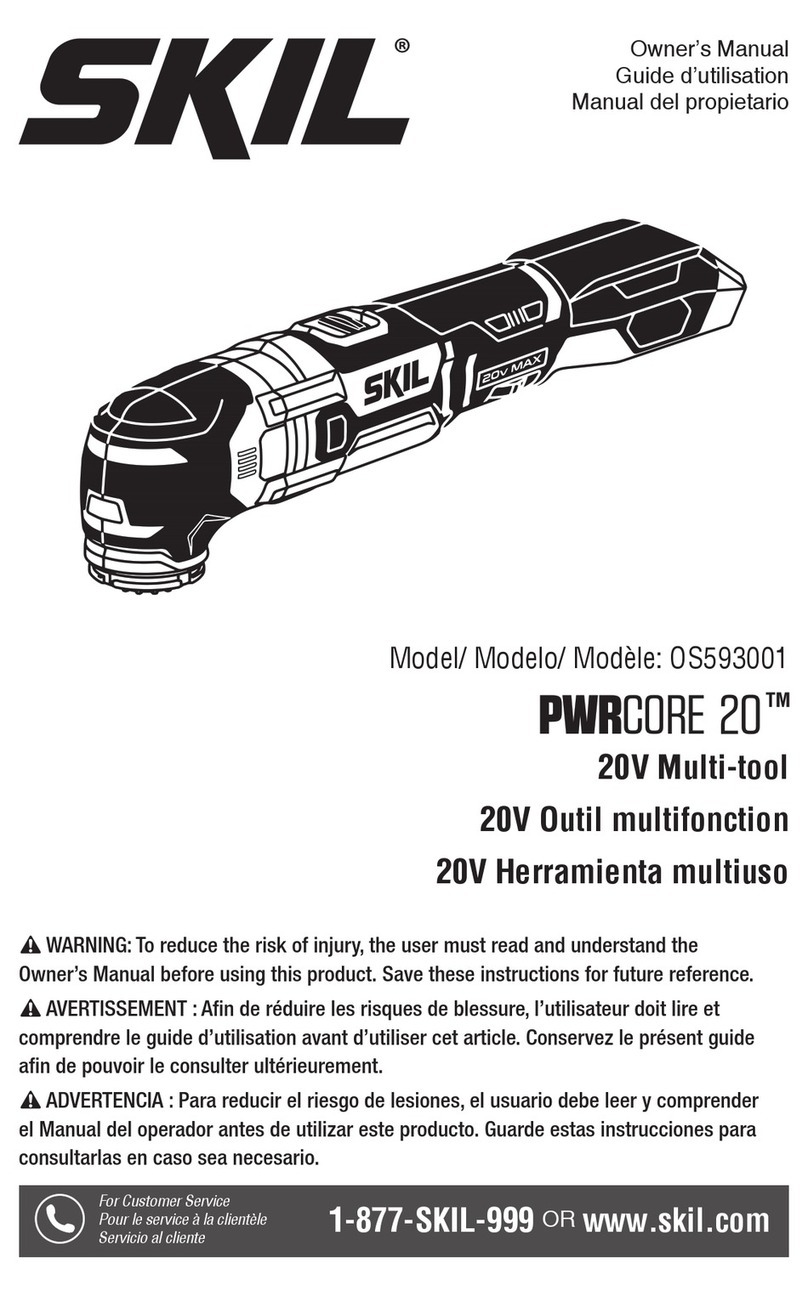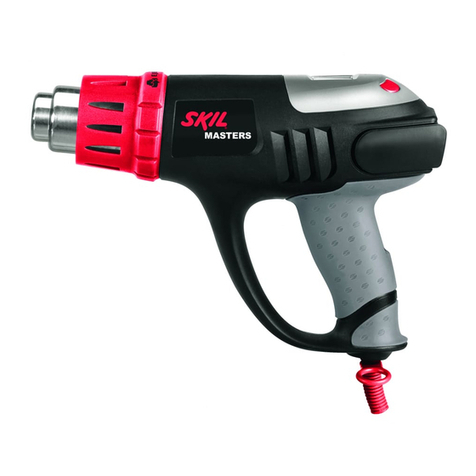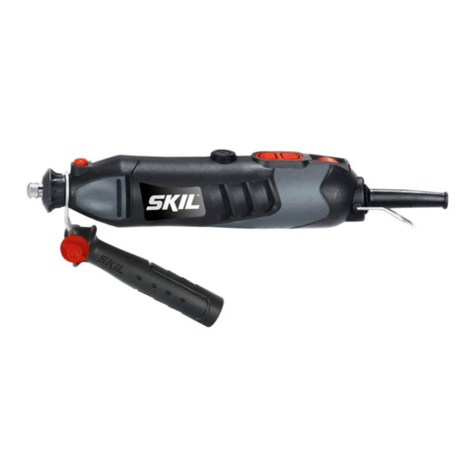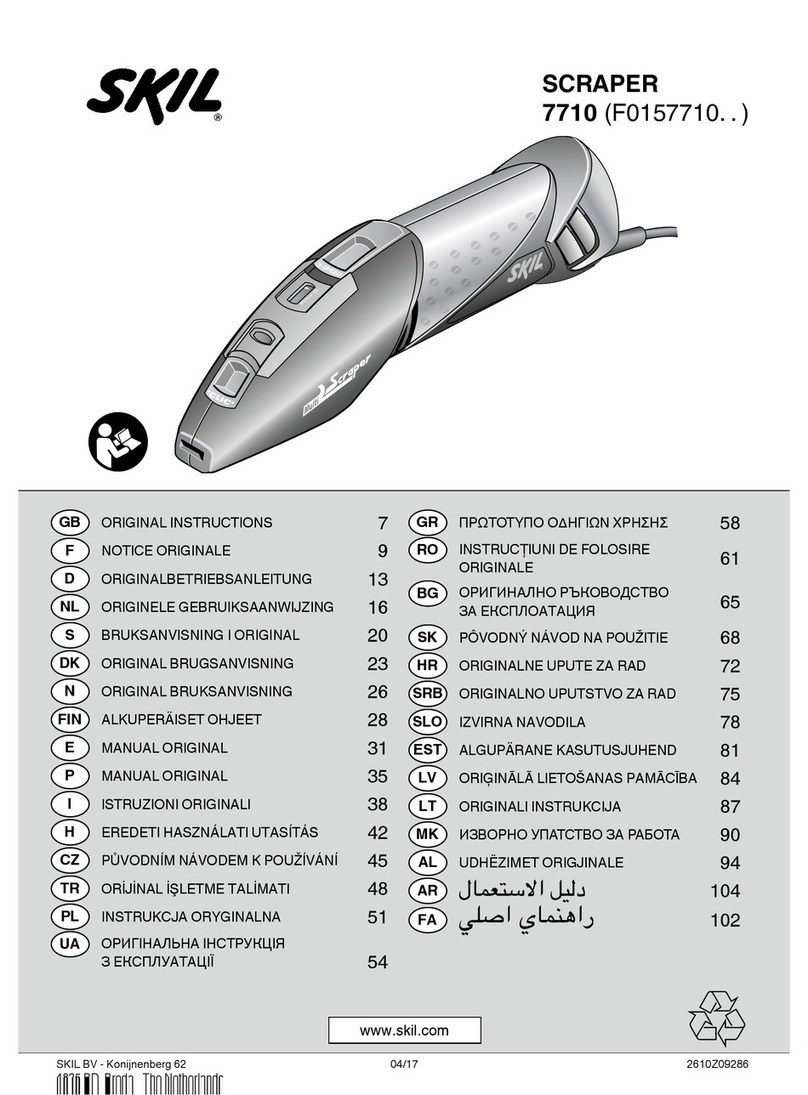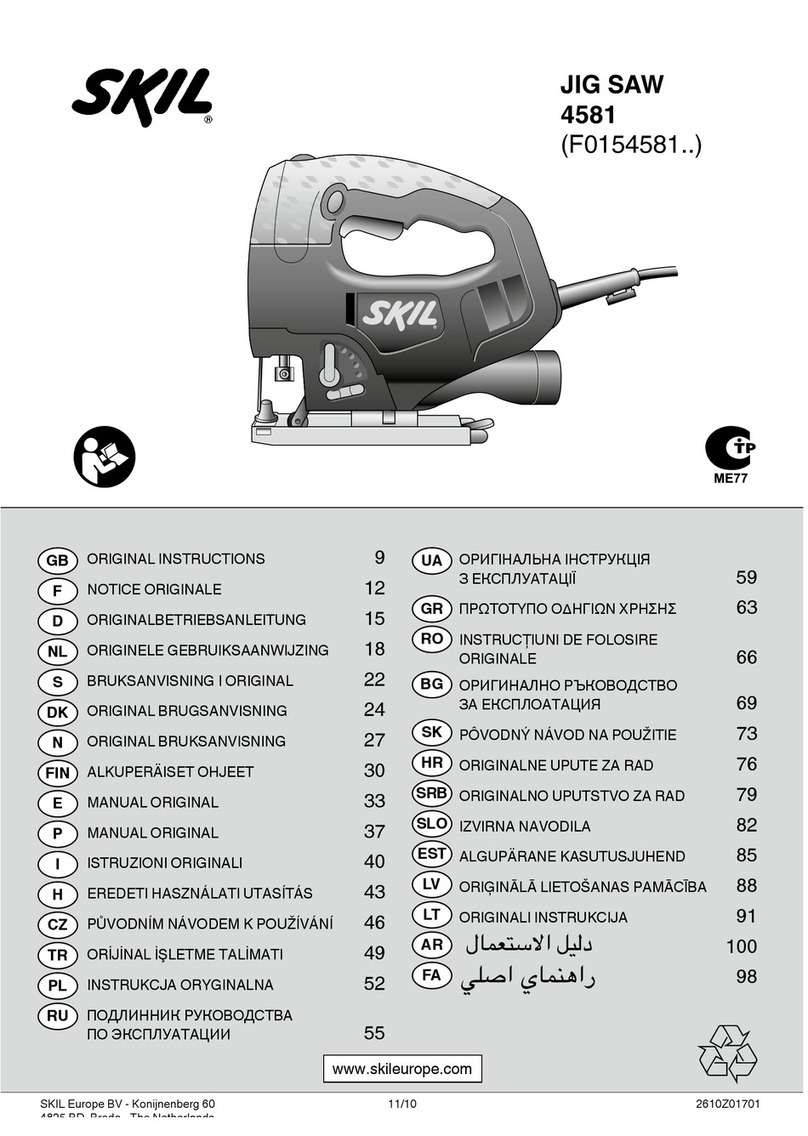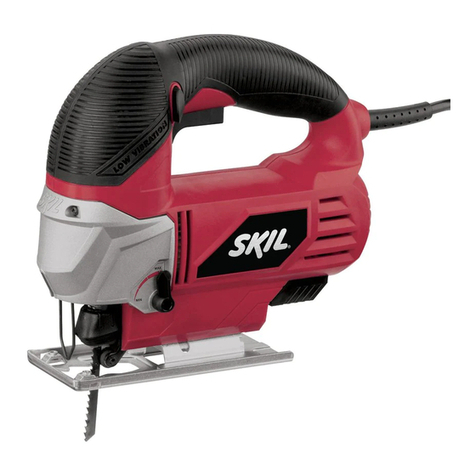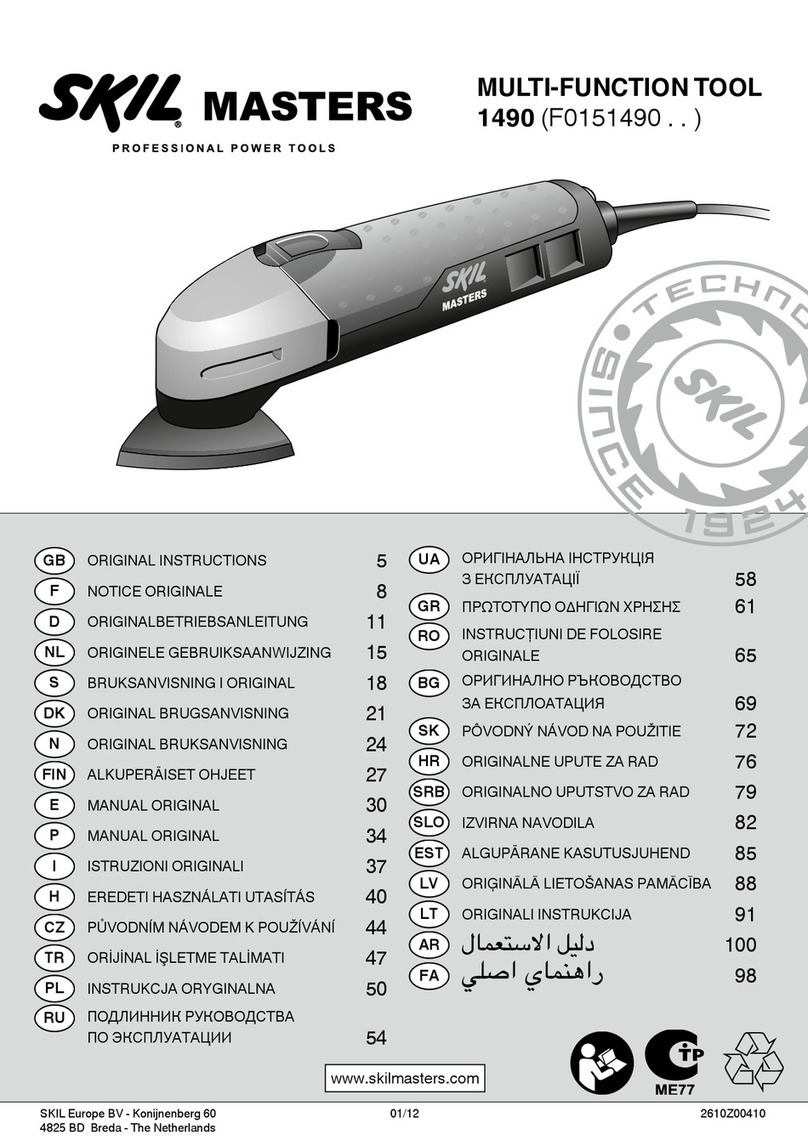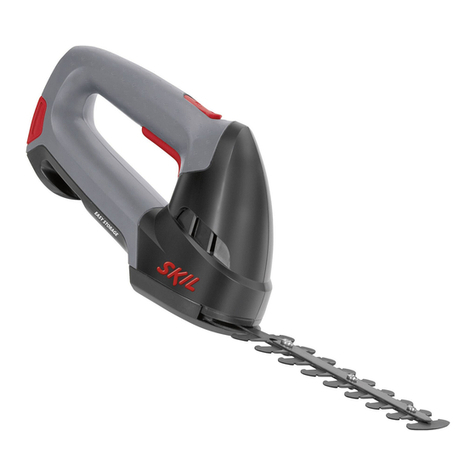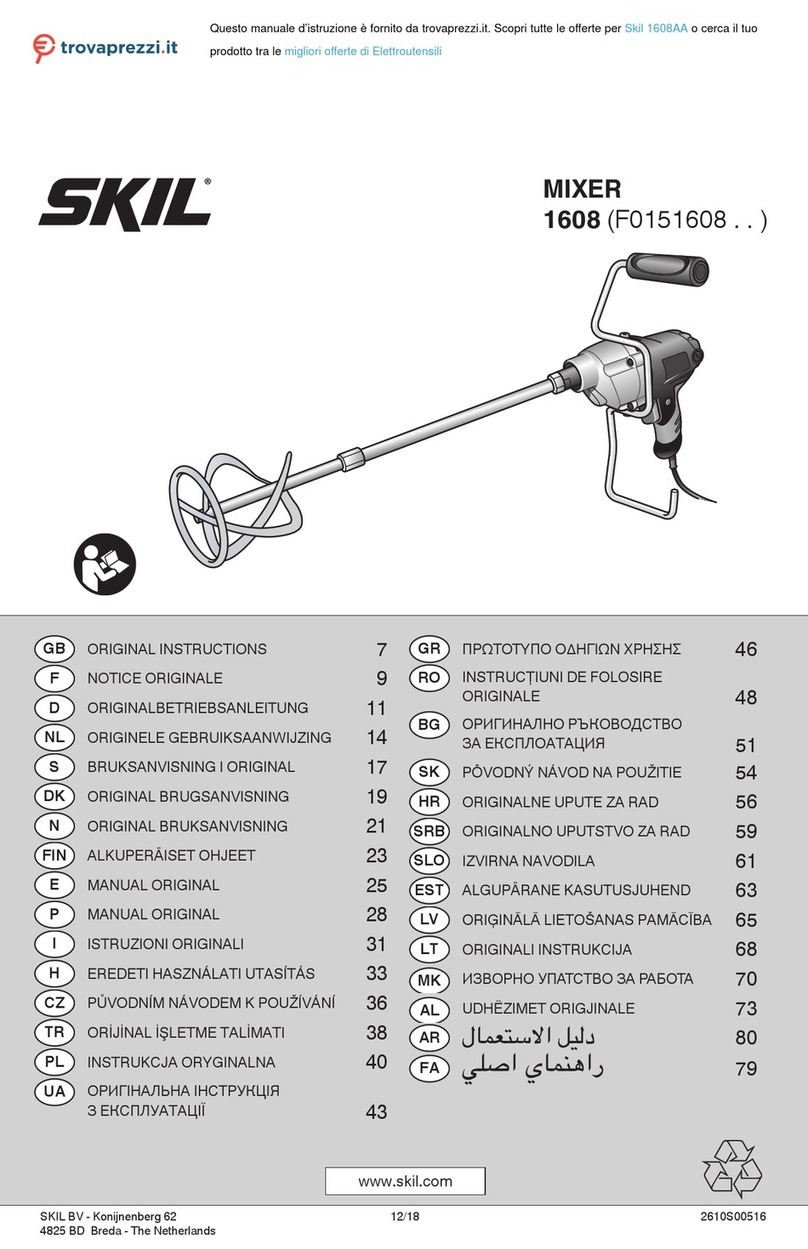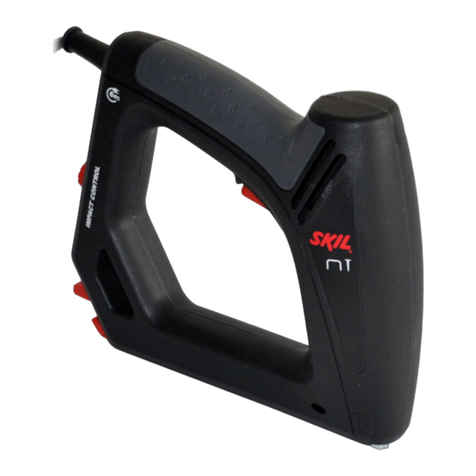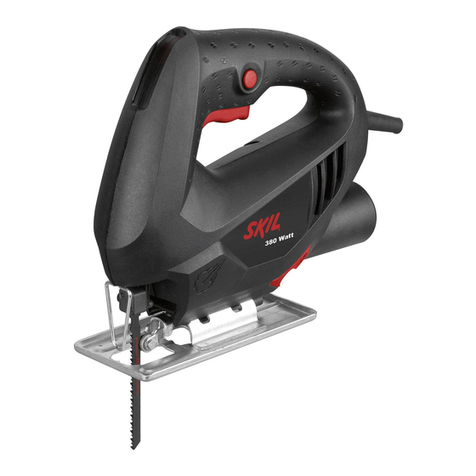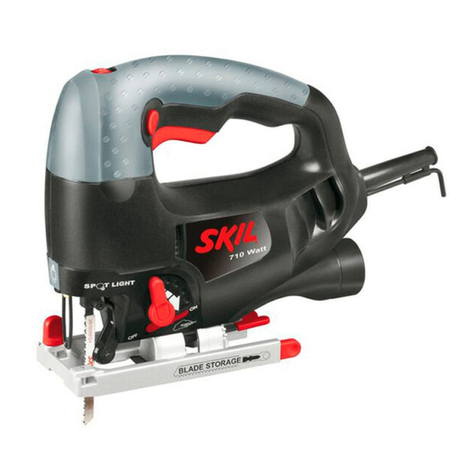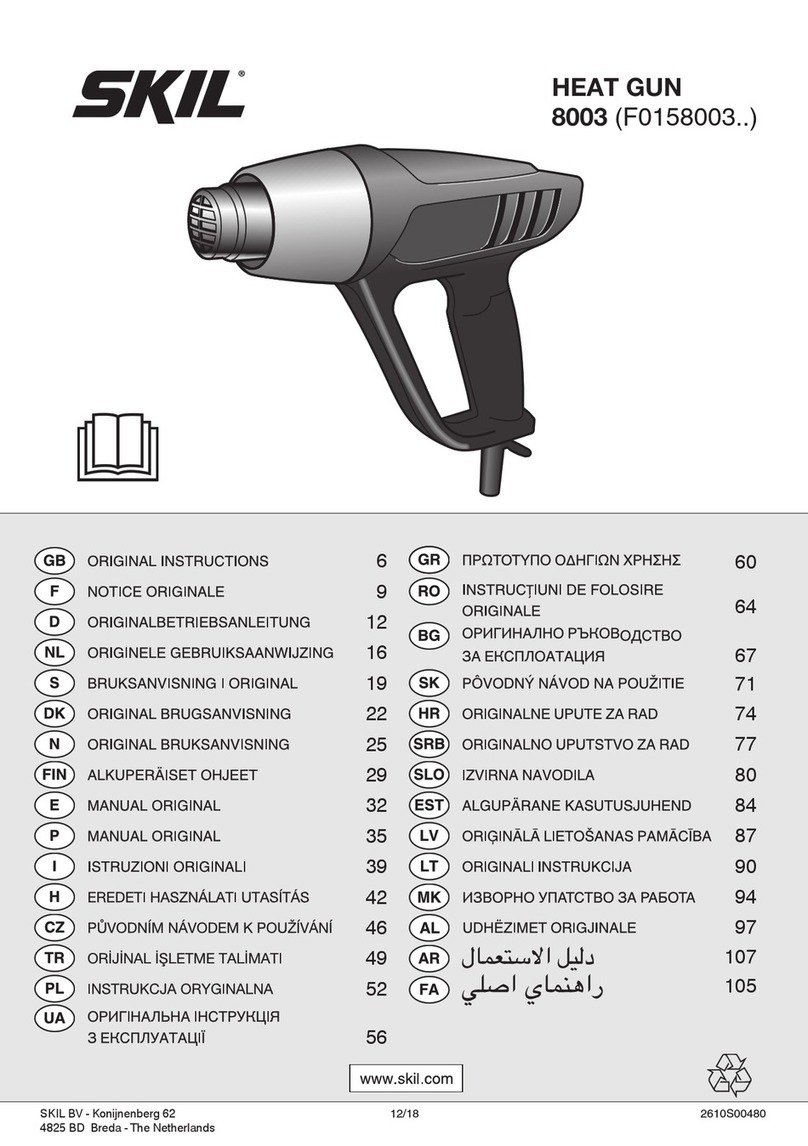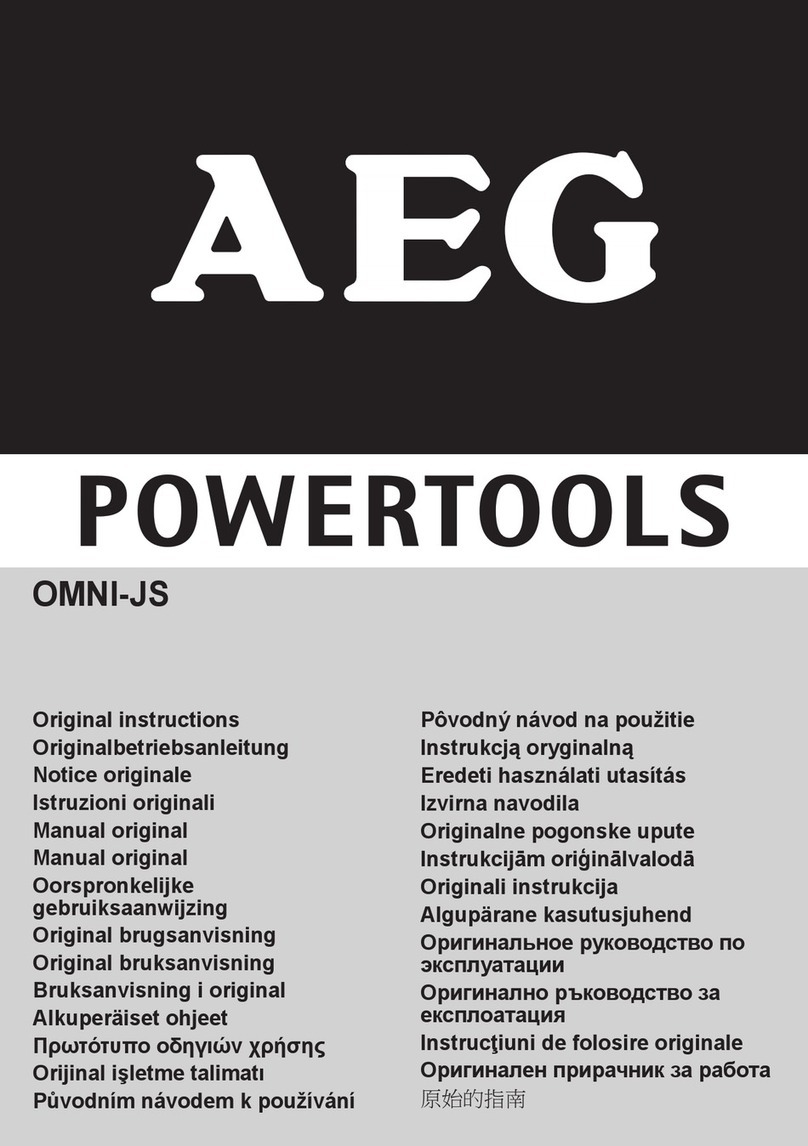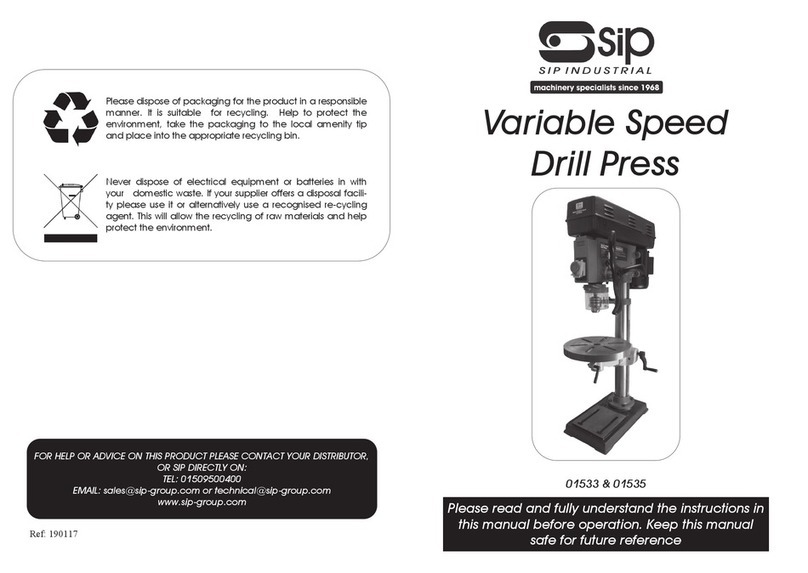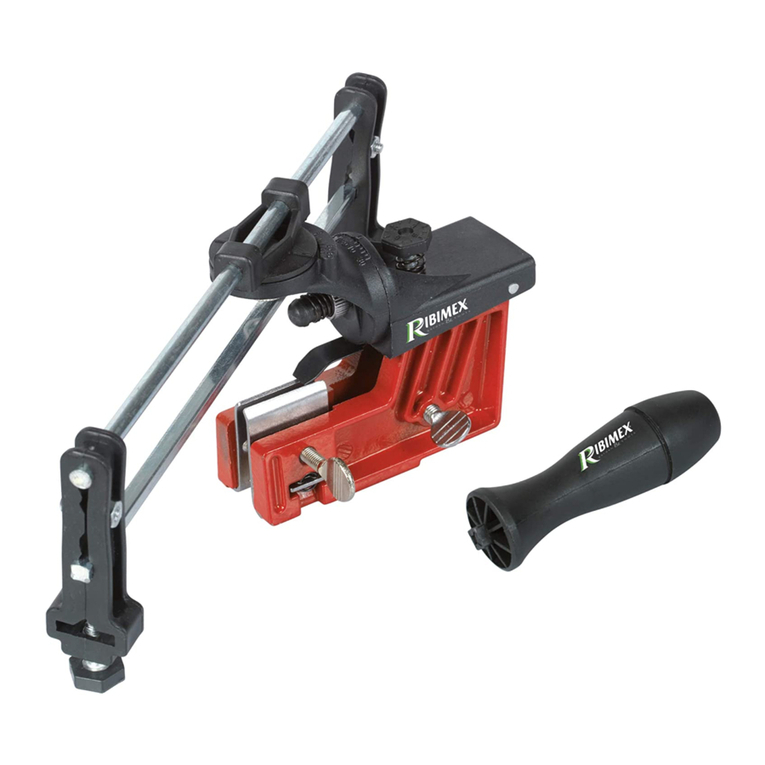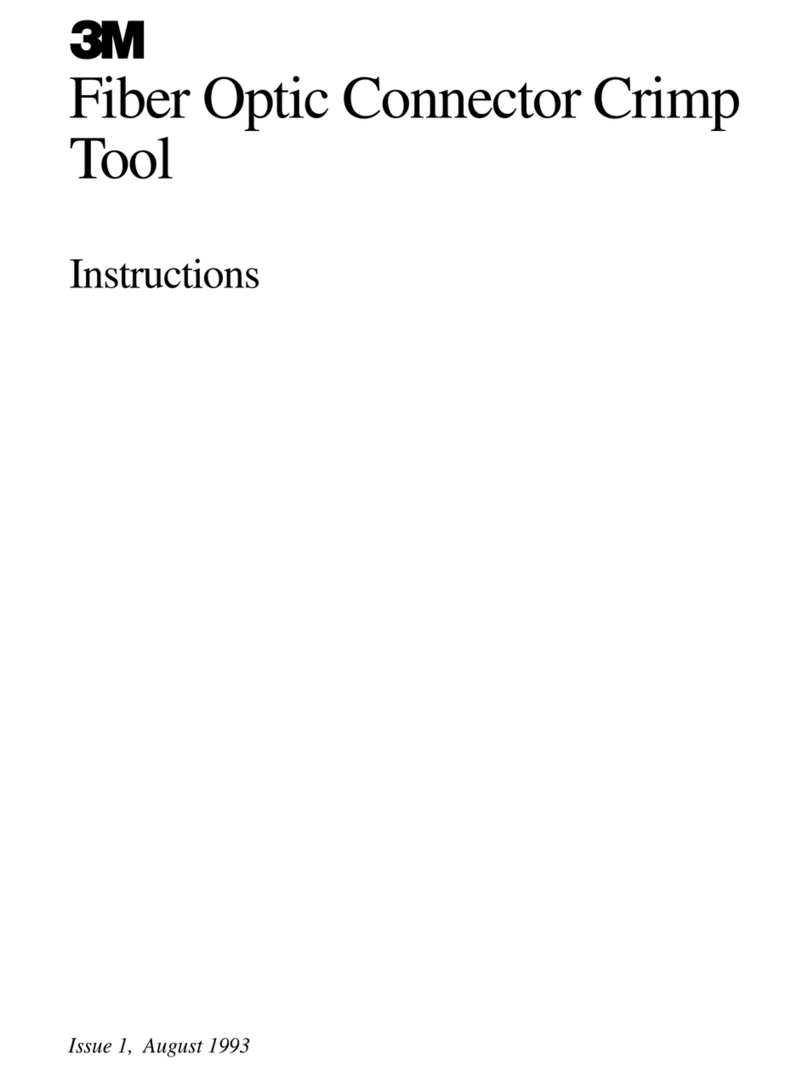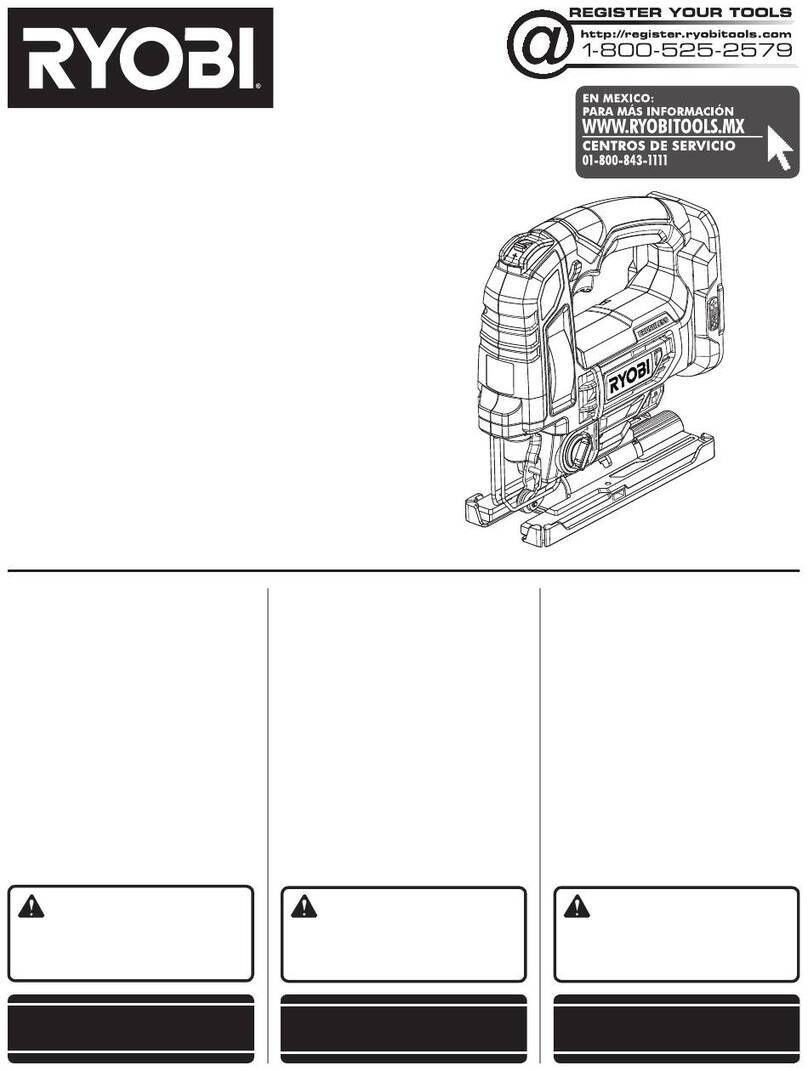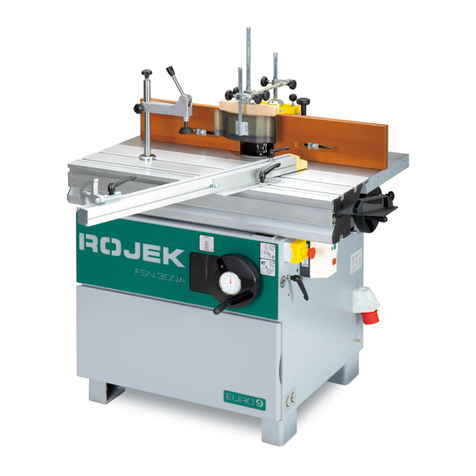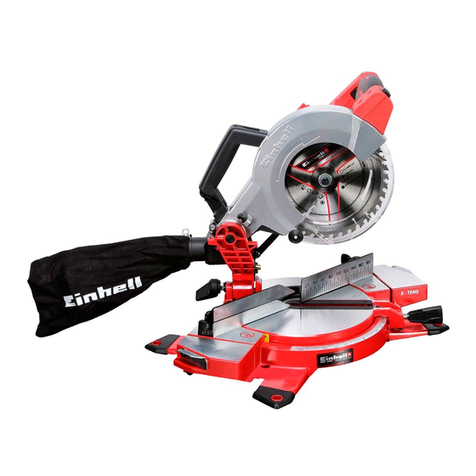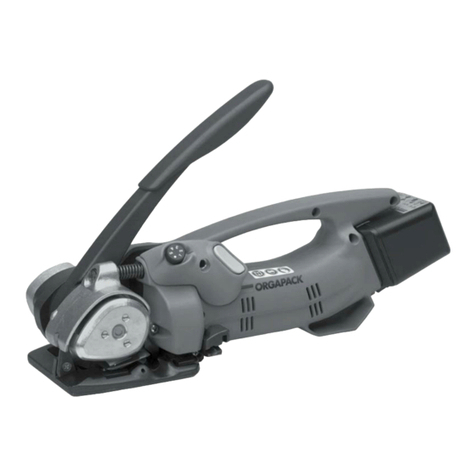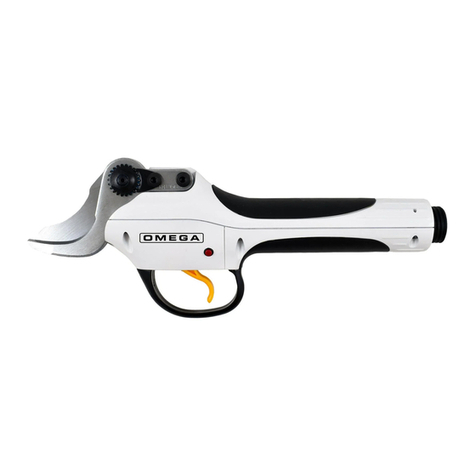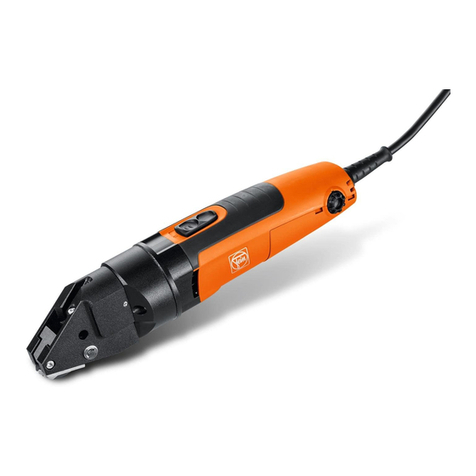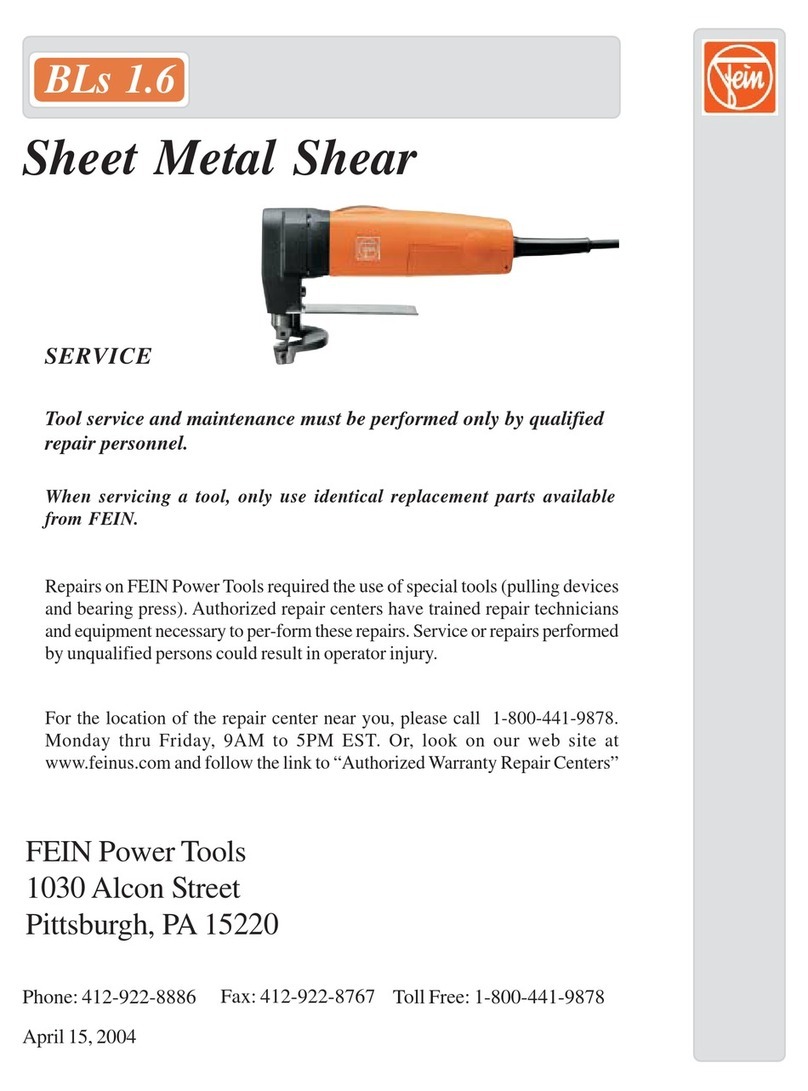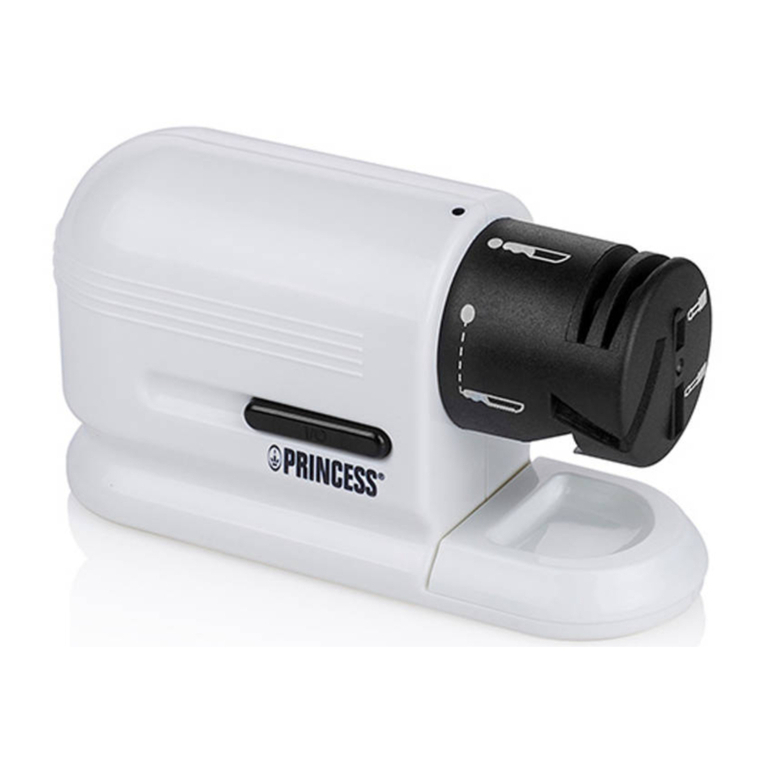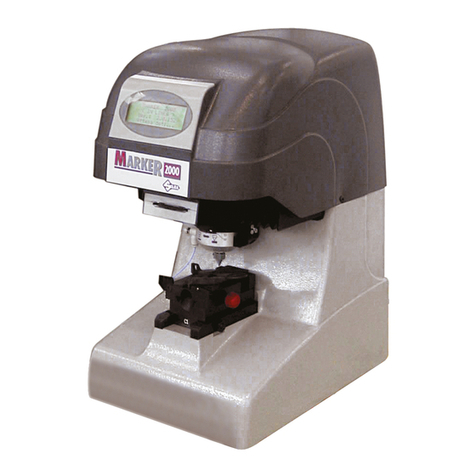2<,877.,==1.95>0/;86=1.98@.;<8>;,.
*7-8;=1.+*==.;B9*,4/;86=1.98@.;=885
+./8;.6*4270 *7B*-3><=6.7=<,1*70270
*,,.<<8;2.< 8; <=8;270 98@.; =885< Such
preventive safety measures reduce the risk of
starting the power tool accidentally.
"=8;. 2-5. 98@.; =885< 8>= 8/ =1. ;.*,1 8/
,125-;.7 *7- -8 78= *558@ 9.;<87<
>7/*6252*; @2=1 =1. 98@.; =885 8; =1.<.
27<=;>,=287<=889.;*=.=1.98@.;=885
Power tools are dangerous in the hands of
untrained users.
*27=*2798@.;=885<1.,4/8;62<*52076.7=
8;+27-270 8/ 68?270 9*;=< +;.*4*0. 8/
9*;=<*7-*7B 8=1.;,87-2=287=1*=6*B
*//.,= =1. 98@.; =885E< 89.;*=287 /
-*6*0.- 1*?.=1.98@.;=885;.9*2;.-
+./8;. ><. Many accidents are caused by
poorly maintained power tools.
..9,>==270=885<<1*;9*7-,5.*7Properly
maintained cutting tools with sharp cutting
edges are less likely to bind and are easier to
control.
$<.=1. 98@.;=885*,,.<<8;2.< *7- =885
+2=<.=,27*,,8;-*7,.@2=1=1.<.27<=;>,=287<
=*427027=8*,,8>7==1.@8;4270,87-2=287<
*7- =1. @8;4 =8 +. 9.;/8;6.- Use of the
power tool for operations different from those
intended could result in a hazardous situation.
".;?2,.
*?.B8>;98@.;=885<.;?2,.-+B*:>*52/2.-
;.9*2; 9.;<87 ><270 875B 2-.7=2,*5
;.95*,.6.7= 9*;=< This will ensure that the
safety of the power tool is maintained.
85-98@.;=885+B27<>5*=.-0;299270
<>;/*,.<@1.79.;/8;6270 *7 89.;*=287
@1.;.=1.,>==270=885<6*B,87=*,=
12--.7@2;270 Contact with a "live" wire will
make exposed metal parts of the tool "live" and
shock the operator. Do not drill, fasten or break
into existing walls or other blind areas where
electrical wiring may exist. If this situation is
unavoidable, disconnect all fuses or circuit
breakers feeding this worksite.
$<.,5*69<8;*78=1.;9;*,=2,*5 @*B=8
<.,>;.*7-<>998;==1.@8;492.,.=8*
<=*+5.95*=/8;6Holding the work by hand or
against your body leaves it unstable and may
lead to loss of control.
$<. * 6.=*5 -.=.,=8; =8 -.=.;627. 2/ =1.;.
*;. 0*< 8; @*=.; 929.< 12--.7 27 =1. @8;4
*;.*8; ,*55 =1.58,*5 >=252=B ,869*7B/8;
*<<2<=*7,.+./8;.+.0277270=1.89.;*=287
Striking or cutting into a gas line will result in
explosion. Water entering an electrical device
may cause electrocution.
5@*B<185-=1.=885/2;65B@2=1+8=11*7-<
/8;6*A26>6,87=;85..99;89.;/88=270
*7-+*5*7,.*=*55=26.<This enables better
control of the power tool in unexpected
situations.
..91*7-< *@*B /;86 ,>==270 *;.* 8
78=;.*,1>7-.;=1.6*=.;2*5+.270,>= The
proximity of the blade to your hand is hidden
from your sight.
878=><.->558;-*6*0.-+5*-.< Bent
blade can break easily or cause kickback.
A.;,2<. .A=;.6. ,*>=287 @1.7 1*7-5270
=1. *,,.<<8;2.< The accessories are very
sharp.
&.*;9;8=.,=2?.058?.<@1.7,1*70270
,>==270 *,,.<<8;2.< Accessories become
hot after prolonged usage.
$<. =12,4 ,><1287.- 058?.< *7- 5262= =1.
.A98<>;.=26.+B=*4270/;.:>.7=;.<=
9.;28-<Vibration caused by the tool may be
harmful to the hands and arms.
./8;.<,;*9270,1.,4@8;492.,./8;7*25<
/=1.;.*;.7*25<.2=1.;;.68?.=1.68;<.=
=1.6@.55+.58@27=.7-.-/272<1.-<>;/*,.
Striking a nail with accessory edge could
cause the tool to jump.
878=@.=<*7-@2=1=12<=885 iquids
entering the motor housing is an electrical
shock hazard.
.?.;@8;427*;.*@12,12<<8*4.-@2=1*
52:>2-<>,1*<*<85?.7=8;@*=.;8;
-*69.7.- <>,1 *< 7.@5B *9952.-
@*559*9.;There is an electrical shock
hazard when working in such conditions with a
power tool and heating of the liquid caused by
scraping action may cause harmful vapors to
be emitted from workpiece.
5@*B<@.*; .B. 9;8=.,=287*7- * -><=
6*<4/8;-><=B*9952,*=287<*7- @1.7
"*/.=B!>5.</8;<,255*=270#885<
-3-
SM 1619X05148 10-10:SM 1619X05148 10-10 10/12/10 9:43 AM Page 3
